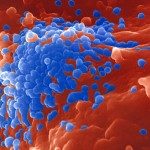Link to Pubmed [PMID] – 16010162
J. Acquir. Immune Defic. Syndr. 2005 Aug;39(4):412-8
OBJECTIVE: Our study investigated the rate of recurrence of cervical intraepithelial neoplasia (CIN) in HIV-positive women after surgery in the era of highly active antiretroviral therapy (HAART).
METHODS: One hundred twenty-one HIV-positive women were followed-up with cytology, colposcopy, and histology after surgery for CIN. We conducted univariate and multivariate analyses to determine the relation between recurrence of CIN and risk factors using Cox proportional hazard models with left truncation.
RESULTS: The rate of recurrence of any CIN was 22.3 per 100 patient-years and the rate of high-grade CIN was 8.6 per 100 patient-years during 166 and 279 patient-years of follow-up, respectively. In multivariate analysis, a positive margin was associated with a risk of recurrence of any CIN (relative risk [RR] = 3.5, 95% confidence interval [CI]: 1.2-9.8) and a risk of recurrence of high-grade CIN (RR = 9.0, 95% CI: 2.2-36.5). CD4 counts <200 cells/mm were associated with a risk of recurrence of any CIN (RR = 9.4, 95% CI: 2.7-32.7) but not with a risk of recurrence of high-grade CIN. HAART exhibited a protective effect on the recurrence of any CIN (RR = 0.3, 95% CI: 0.1-0.7) and of high-grade CIN (RR = 0.2, 95% CI: 0.1-0.7).
CONCLUSION: CD4 cell counts <200/mm(3) and a positive margin were predictors of recurrence, whereas HAART had a strong protective effect. Although surgery is highly effective in immunocompetent patients, it seems to be effective only in preventing progression to cancer in HIV-infected women.

